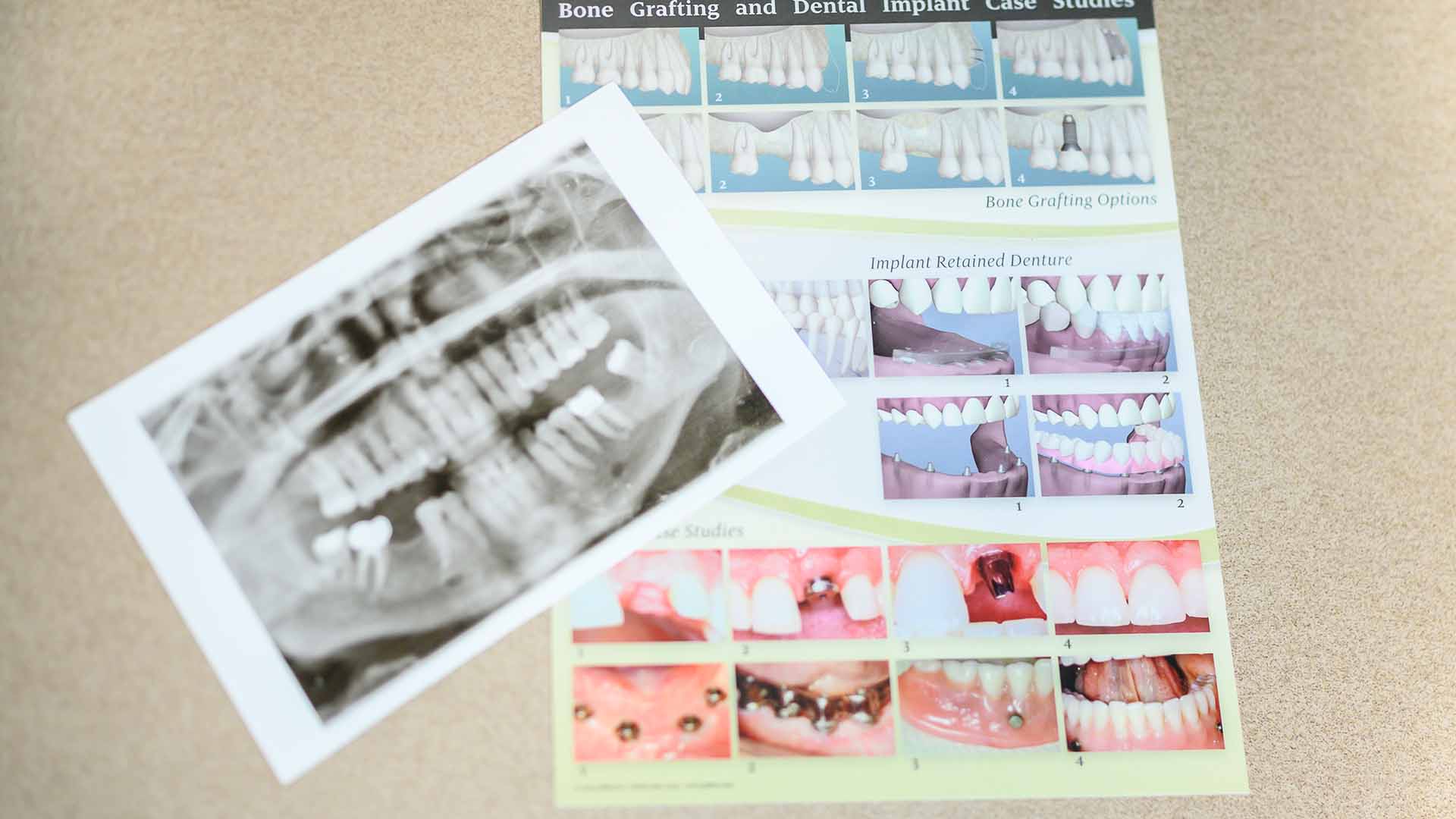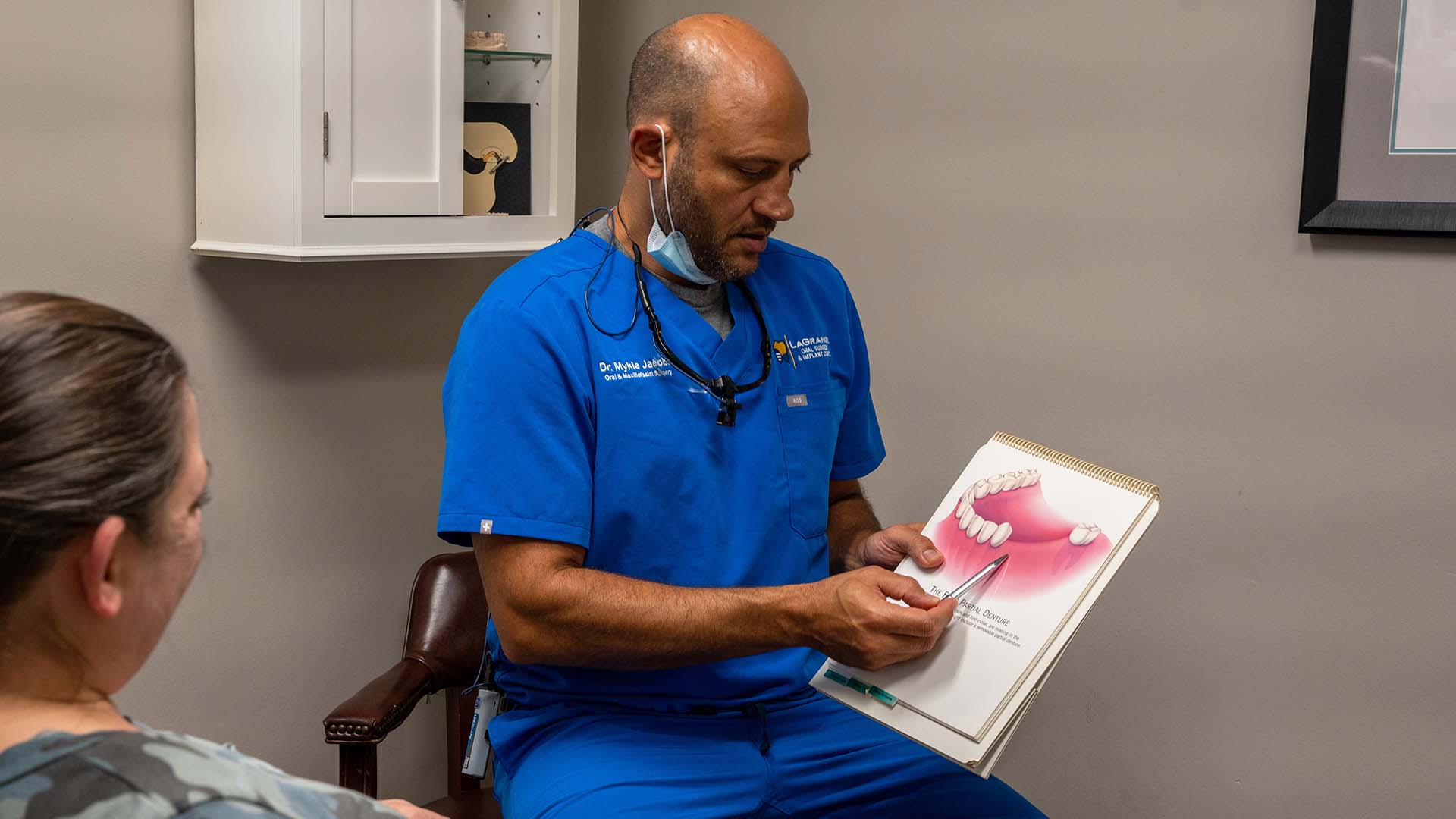All-on-4 Dental Implants can be a total game-changer for patients who have missing teeth, find dentures uncomfortable, or don’t want to have good tooth structure removed to make a bridge. But if you’re dealing with gum disease, does that rule out implants as an option? Not necessarily.
According to the American Dental Association: “Dental implants are a popular and effective way to replace missing teeth and are designed to blend in with your other teeth.” But implants aren’t a “one-size fits all” solution. The ADA says gum health and overall health are chief concerns, stating “Your health is more of a factor than your age. You may be medically evaluated by a physician before any implant surgery is scheduled. Chronic illnesses, such as diabetes or leukemia, may interfere with healing after surgery. Patients with these issues may not be good candidates for implants. Using tobacco can also slow healing.”

If your overall health is good, but your gum health isn’t, there are two concerns. Firstly, the implant needs underlying bone matter that will support the implant’s root. If gum disease has advanced to the point where the jawbone is deteriorating, it may not be wide and thick enough to provide that support. Secondly, implants need the gums to surround the root and lower crown, just like natural teeth do. Untreated gum disease can wear away the gums, leaving you without enough tissue to support the implant.
So how do you know if you have enough jawbone and gum tissue to be a good candidate for implants? The answer lies with your dentist, who has multiple ways to help make your dream of that perfect smile a reality.
For bone issues, there are two options according to the American Academy of Periodontology:
Sinus Augmentation – A key to implant success is the quantity and quality of the bone where the implant is to be placed. The upper back jaw has traditionally been one of the most difficult areas to successfully place dental implants due to insufficient bone quantity and quality and the close proximity to the sinus. Sinus augmentation can help correct this problem by raising the sinus floor and developing bone for the placement of dental implants.
Ridge Modification – Deformities in the upper or lower jaw can leave you with an inadequate amount of bone in which to place dental implants. To correct the problem, the gum is lifted away from the ridge to expose the void where bone is missing. The void is then filled with bone or bone substitute to build up the ridge. Ridge modification has been shown to greatly improve the jaw’s appearance and increase the chances of successful implants.

When it comes to gum disease, depending on the severity, the answer may be as simple as bringing the disease under control. That might mean frequent cleanings and a strict oral hygiene routine, avoiding smoking, chewing tobacco, or drinking alcohol. If the disease is more advanced, a patient might require bone or gum grafting. Bone grafting uses donor bone or bone from another area of a patient’s body to build back up the jaw structure. Gum grafting uses healthy tissue from the roof of the patient’s mouth to correct gum recession.
According to the American Academy of Periodontology, “Since periodontists have had years of specialized training beyond dental school to make them experts on both soft and hard tissues, they have the ideal combination of experience and knowledge to make sure you get a dental implant solution that looks and feels like your own teeth.”
Now that’s something to smile about!



